Most damage to LEGO pieces is superficial and will have little to no effect on play value or the structural integrity of a LEGO project. If you sell degraded LEGO pieces on eBay, describe any defects to the pieces in your eBay listing. If you don’t want to take the time to manually identify all damaged pieces, at least write a general disclaimer that pieces might be yellowed, scratched, chipped, etc. AND provide one or, better yet, several high resolution photos for buyers so that they can evaluate the deterioration with their own eyes.
Some common forms of LEGO part damage are: bite marks, scratches and scuffs, melting (mostly of rubber pieces), paint wear, fading and yellowing. LEGO pieces can also become chipped, warped, or broken, depending on the type of piece and the piece’s material (ABS plastic, rubbler, paper, etc.).
Common types of LEGO part damage are examined in further detail below.
Yellowing of LEGO Pieces
If your LEGO pieces are exposed to sunlight for an extended period of time, some of the pieces may begin to yellow. White is a particular vulnerable color for yellowing. Nonetheless, many colors–especially light colors–are vulnerable to color changes when exposed to sunlight. Store your LEGO in a cool room out of the sun.
Fortunately, if your pieces have already yellowed, LEGO builders have discovered a method of restoring the original color. The secret? Oxiclean (hydrogen peroxide). All you need to do is immerse your yellowed plastic pieces in a hydrogen peroxide, which will reverse the yellowing.
Fading of LEGO Paper Products
Fading, like yellowing, is triggered from extended exposure to sunlight. Fading differs from yellowing in that fading primarily affects instruction booklets, stickers and other paper products. Store your instruction booklets, stickers, and paper products in a cool room out of the sun.
Bite Marks (Yuck!) on LEGO Pieces
At the risk of sounding like Captain Obvious, the only way bite marks can mar LEGO bricks is if a child, animal, or childlike adult bites the pieces. Duh. Remember, LEGO pieces are choking hazards and not recommended for children under 5. Keep your LEGO pieces far away from small children, pets, and Drunk Uncle Wally who wants to see how many 2×4 bricks he can fit into his mouth.
If you purchase a large unsorted lot from Craigslist, a garage sale, or eBay, it’s possible that you will encounter pieces with bite marks while you are sorting out the lot.
Melting and Warping of LEGO Pieces
Most standard plastic LEGO bricks won’t melt unless exposed to extreme heat. Some rubber LEGO parts can melt or become sticky in a hot room during the summertime. Common LEGO pieces made out of rubber include tires and treads (common in sets with cars and other vehicles) as well as rubber bands and belts (common in Technic sets). Take extra care with your rubber LEGO parts and store them in cool, dry areas in order to avoid melting or warping.
Scratching and Scuffing to LEGO Pieces
LEGO pieces can acquire scratch marks when you rub pieces together repetitively and harshly. Sometimes children play with LEGO very roughly, so LEGO used by children will commonly boast at least a few battle scars.
Some parts are also more easily scratched even when you are treating the pieces very carefully. LEGO pieces that are easily scratched include: windows, windscreens, tile pieces, etc. You’ll also want to be more careful with any pieces bearing a printed designs, as a piece with a scratched design becomes significantly less valuable and desirable to buyers than an unscratched one.
Bending, Breaking and Chipping of LEGO Pieces
Some LEGO pieces are fragile and need to be handled with extra care or the piece could bend or break during storage or shipment. You can tell if a piece–often a minifig accessory–has been bent if you see a white stress mark.
Some LEGO pieces are made out of different thicknesses plastics. The pieces that are made out of thin and brittle plastic are the most fragile and most likely to break.
Occasionally you may come across a chipped brick, but chipping is generally less common than other damage. Chipping occurs mainly for the same reason as scratching; rough LEGO play.
Permanent Marker or Pen Marks on LEGO Pieces
Kids will be kids and sometimes they scribble permanent marker onto LEGO pieces. LEGO builders have successfully removed permanent marker from pieces by applying rubbing alcohol or by using a Mr. Clean Magic Eraser.
Be careful–attempting to remove permanent marker from printed designs can strip away the design as well (kind of a “throwing the baby out with the bath water” type of situation).
Paint Wear or Print Wear to LEGO Pieces
Heavy play can rub the printing right off minifig heads and decorated brick, slope and tile pieces. Buyer and reseller beware: if you buy used LEGO lots online, low resolution photos may NOT show enough detail for you to see paint wear or other damage to individual LEGO pieces.
Damage to LEGO Instruction Booklets
LEGO instruction booklets, since they are made out of paper, can easily become: creased, dog eared, wrinkled, faded, torn, stained or water damaged. Sometimes an instruction booklet that’s “new” out of the box can be damaged just from sliding around inside the box. As with LEGO pieces, be sure to note any damage to the instruction booklet in your listing.
Instruction booklets also demand more care during packing. Reinforce instruction booklets with rigid cardboard before shipping them to buyers. Make sure the cardboard is sturdy enough to prevent the booklet from bending during mailing.

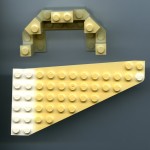

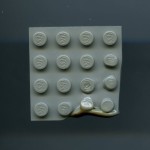

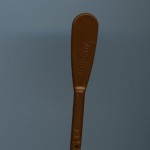
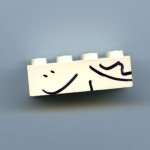
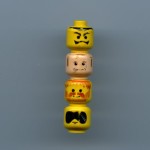
is there any way to fix worn off lego faces?
Buying a replacement minifig head on BrickLink, BrickOwl, or eBay is the best option. If you’d just like to salvage the minifig head for better play value, you could try using a Fine Point or Ultra Fine Point Sharpie to fill in some of the worn off design. Black works well. Sharpie also offers a 24 pack of assorted colors. Before using the markers on the head, practice on a LEGO piece you don’t care about and decide if you are satisfied with the results. DO NOT use Sharpie on a rare or irreplaceable minifig head, as the marker may ruin the head or decrease the value of the piece. Also, if you end up selling a LEGO piece that’s been touched up with a permanent marker, make sure your listing informs your buyers about the modification. It’s highly deceptive to pass off a LEGO piece to a buyer without mentioning that it’s been touched up with a Sharpie.